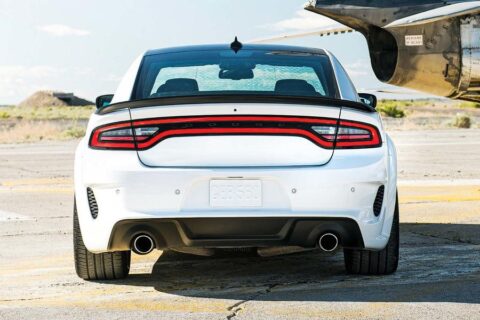A Lamborghini Huracán might be the stuff of lottery wins, but everyone can see themselves behind the wheel of a Hellcat.
What about the Charger?
![]()
Nowhere near as immediately appealing as the Challenger, the Charger was always going to be the last big Dodge left standing. When it emerged as a four-door cousin to the Challenger, Mopar fans were madder than the time Warner Bros took the confederate flag off the roof of the General Lee.
But the Charger was one of the last few cars you could buy that felt authentic to the old-fashioned full-size American saloon experience. They weren’t quite big enough inside to be actually full-size (the Ford Crown Victoria made a better police patrol car), but the rear-drive architecture and variety of powertrains brought the flavour of Hazzard County to the masses.
Which other car spanned such a breadth of choice? Show up at your average rental car counter and you’d drive away in a bare-bones V6 Charger with tiny alloy wheels. Or factory-order a Charger Hellcat and you’d have an automatic transmission, a roomy back seat and trunk and a top speed of 203mph. If Prohibition reared its head again, the home distillers would be running ’shine in Chargers in a heartbeat.
This one is a limited-edition Last Call 392 Super Bee, with the same 6.4-litre V8 as the Challenger. It leaves off the widebody but is hardly discreet, with drag-racing-style bonnet pins and a show-off graphics package. The little bumblebee doing a burnout is a nice touch.
The Charger doesn’t really hide those rental car roots and shows its age more than the Challenger. It is, however, a better-resolved chassis, and there is a certain satisfaction in knowing that you spent nearly every single dollar on as much motor as possible. The automatic transmission and gutsy torque make for unexpectedly smooth operation, but just a touch more throttle input and the Charger growls a warning. It’s still a brute.
What lessons can be learned for the future?

As they thunder into retirement, the lasting impact of these Dodges fills the windscreen ahead. Yes, they were deliberate throwbacks right from the very development process, but there are lessons here that can be carried forward to the electric future.
